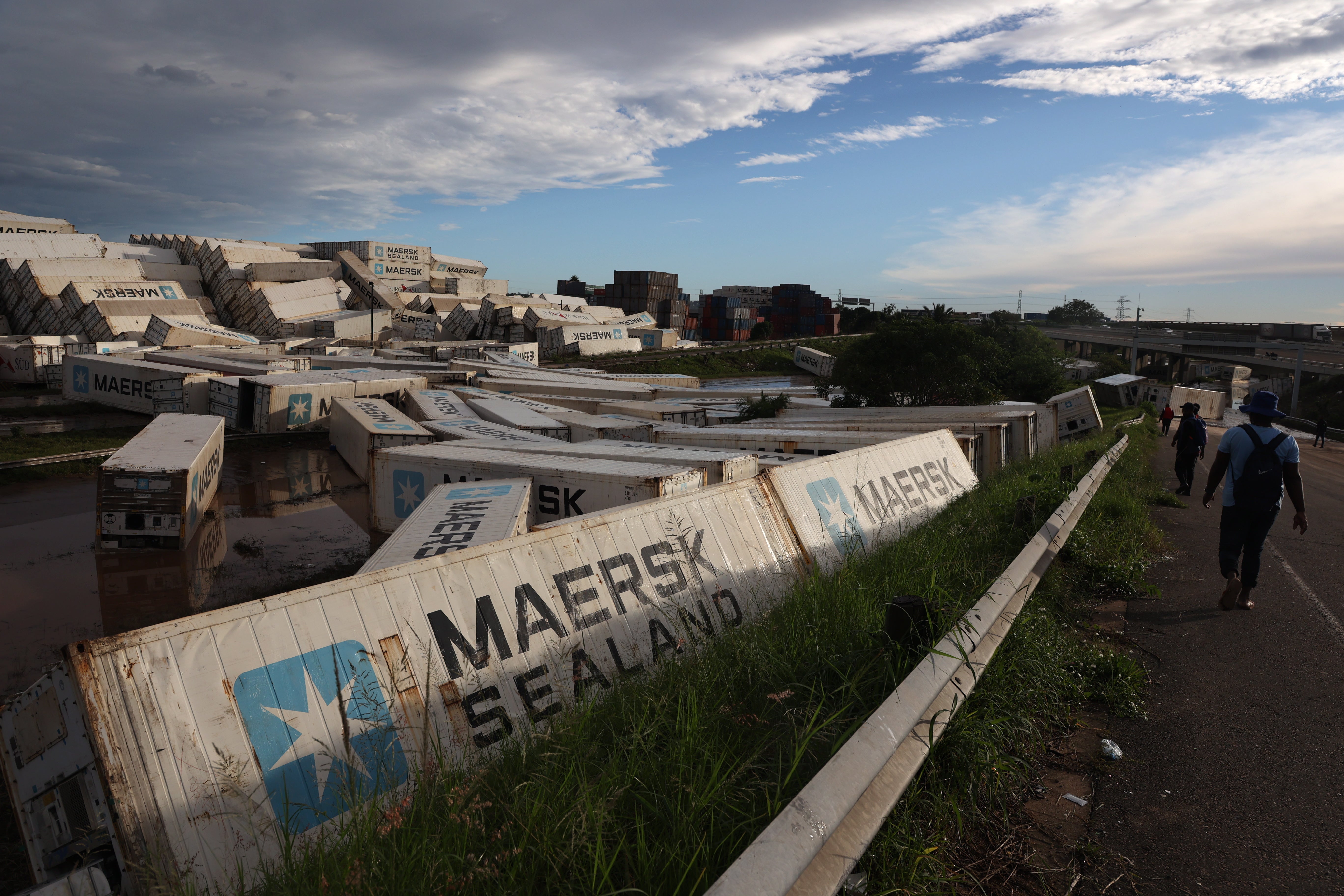At least 450 people were killed in South Africa’s floods. Climate change doubled the risk
In April, parts of KwaZulu-Natal province, including the city of Durban, were deluged with nearly 14 inches of rain in 48 hours - around half the annual rainfall
Climate change nearly doubled the likelihood of the devastating and deadly South African flooding last month, according to rapid analysis from an international team of scientists.
At least 450 people were killed when subtropical storm Issa swept across KwaZulu-Natal province, including the city of Durban, on Easter weekend. Parts of the region were deluged with nearly 14 inches of rain in 48 hours, around half the annual rainfall.
The heavy downpours caused major flash flooding and mudslides, killing dozens of people living in hillside shanty towns. Around 6,000 homes were damaged along with critical infrastructure like highways and hydroelectric dams. Shipping containers from the Port of Durban, the largest terminal on the continent, were swept into jumbled heaps.
The research, published on Friday by the World Weather Attribution (WWA) initiative, found that the rainfall was made more likely, and more severe, by the climate crisis.
WWA is a collaboration in the emerging field of climate science called Extreme Event Attribution which examines if, and how, climate change impacts storms, fires, heatwaves, cold snaps and droughts.
To figure out what was behind the South African floods, the scientists analysed the maximum rainfall, over two days, in the most affected region, using weather data and computer simulations to compare today’s climate (which has warmed 1.1-1.2C in the last 150 years) with the climate of the past.

The WWA results showed that such an extreme rainfall episode can now be expected to happen about once every 20 years. Without global warming – caused by greenhouse gas emissions from humans burning fossil fuels – such an event would happen once every 40 years.
In a statement, Dr Izidine Pinto, of the climate system analysis group at the University of Cape Town / Red Cross Red Crescent Climate Centre, said that if emissions are not reduced and global temperatures kept below 1.5C, these extreme events “will become increasingly destructive”.
“We need to drastically reduce greenhouse gas emissions and adapt to a new reality where floods and heatwaves are more intense and damaging,” Dr Pinto added.
The floods in South Africa were another tragic example of how climate-driven disasters disproportionately impact the most disenfranchised and vulnerable in society.
More than 40,000 people overall were affected by the floods and landslides, WWA noted. And while the South African Weather Service and local authorities issued early warnings, it seems that alerts had limited reach – and that some people who received them may not have known how, or been able, to respond.

“Most people who died in the floods lived in informal settlements, so again we are seeing how climate change disproportionately impacts the most vulnerable people,” says Dr Friederike Otto of the Grantham Institute at Imperial College London.
However Dr Otto also highlighted the substantial flood damage at the Port of Durban, an integral part of the global supply chain, as “a reminder that there are no borders for climate impacts. What happens in one place can have substantial consequences elsewhere”.
The climate crisis can impact the severity and frequency of rainfall, scientists say. Warmer oceans increases how much water evaporates into the air, and as the atmosphere becomes hotter it can hold more moisture, increasing the risk of downpours.
The WWA iniative has analyzed previous extreme events across the world. Last year, the group found that the deadly US Pacific Northwest heatwave was “virtually impossible” without climate change, and that the European floods were also more likely.
In April, WWA discovered that climate change increased rainfall linked to tropical cyclones that devastated communities in Madagascar, Mozambique & Malawi.
Join our commenting forum
Join thought-provoking conversations, follow other Independent readers and see their replies
7Comments